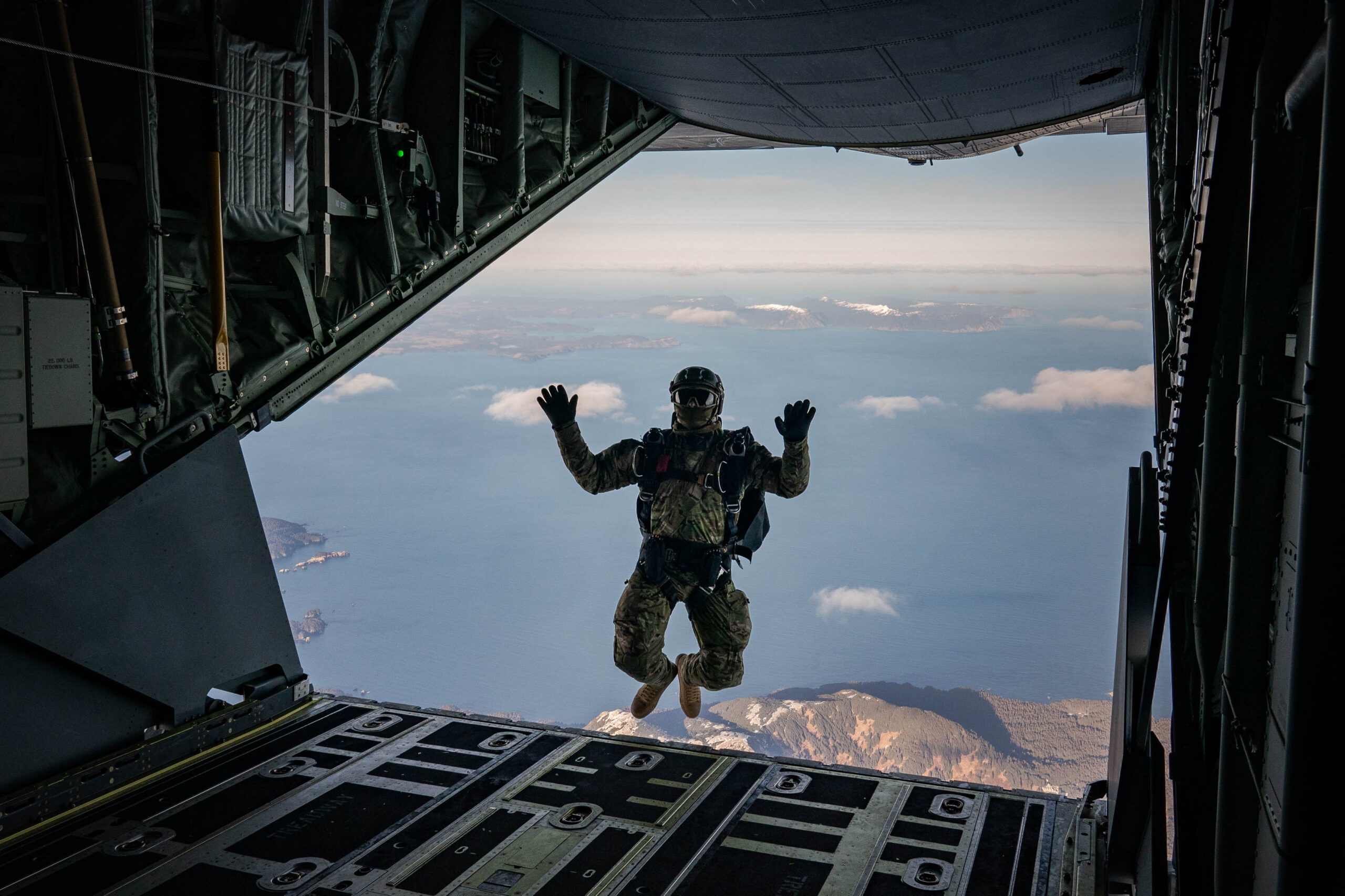
The United States military has become more focused on training in Alaska, as Russia and China have looked to expand into the resource-rich and increasingly ice-free Arctic.
And that goes not just for conventional forces, but also for Special Operations forces like Navy SEALs and Army Green Berets. Both were training in Alaska this past winter by parachuting into frigid water off Kodiak or skiing through the woods around Fairbanks, among other exercises.
That was the subject of a story this month by the Washington Post, which was given rare access to Special Operations training in Alaska.
Washington Post reporter Alex Horton wrote the story and says the unforgiving environment is unique for such training.
Listen:
Alex Horton: In the Arctic, just surviving is the important part. You know, the extreme cold can have such an impact on you and your equipment that the first mission, really, is just to stay alive. And then the second mission is to conduct whatever you’re doing, right, whether it’s a patrol, an attack or a recovery operation. That survivability piece is, like, amped up more than any other environment on Earth.
Let’s just say, for example, you’re a Green Beret, and you’ve been shot. And you’re probably wearing big pants, coats, you know, the big thick boots. And the first thing that happens when you are wounded and a medic comes to help you is they open up your coat, they open up your pants, and all that heat just goes rushing out. And if you’re bleeding, that’s another way for your body to lose warmth. And even an IV bag that has blood in it, if they’re giving you a transfusion, the act of them giving you a transfusion is going to lower your body temperature even more. So the threat of hypothermia, the threat of water making you hypothermic, it’s an ever-present looming danger everywhere you operate in the Arctic.
Casey Grove: We’re talking about, you know, the importance of this training and what the military says about that and the whole, you know, sort of the geopolitical situation that we find ourselves, in this day and age. What did you hear from, you know, the military about that, about why it would be important for the special operations folks to be training in Alaska?
AH: You know, it’s important for Special Operations forces to be ready in any kind of environment and terrain where conflict can happen. And as climate change makes the ice recede, and there’s ships and all kinds of operations. You know, there’s energy exploration, there’s cruise ships, you know, they’re up in the Arctic, and that invites what the Pentagon calls “competition” (from) Russia and China, because there are resources to exploit, there are shipping routes to claim. You know, the sort of northern part of Russia, the way to get that energy to markets in Asia is going through the Bering Sea, around Alaska, to, you know, where Japan and Korea are. So it’s an important route for them. And it’s important route for China as well.
Why it’s important for Special Operations, specifically, too, is, you know, for the last 20 years, the command has really been focused on what they call “direct action” in Iraq and Afghanistan. That’s going on raids, doing high-profile stuff like the SEAL raid to kill Osama bin Laden. That’s what they’ve been doing, and that’s what they’ve been focused on. So now, once the Pentagon has started looking to Russia and China as more of a strategic threat and as strategic competitors, they have to find a role for Special Operations. That means they have to change. They have to focus on places like the Arctic, to operate in a climate where they didn’t have to work in, you know, 5, 10, 15 years ago.
CG: Yeah, we’ve talked kind of about like, shipping lanes opening up and exploration and that kind of thing. But every once in a while, some Russian parliamentarian, you know, says, “We should take back Alaska,” and sort of puts this idea in Alaskans’ heads that maybe somebody’s going to invade mainland Alaska. From, you know, the individual Special Operations members to the commanders, did anybody that you talked to, like, even allude to something like that?
AH: It was interesting, because, you know, the folks who were helping coordinate the trip, Northern Command, which is the the military authority that oversees, you know, North America and also NORAD, like the missile command and defense of the country, their primary mission is homeland defense. When I asked them about how they view Alaska, it’s like, you know, as you said, it has a lot of bases, has a lot of training ranges. And I asked them, like, “Do you view Alaska as, not just a place to go train, but a place to go fight? You know, maybe you will be in the same places in the future, but shooting real rounds at real enemies?” They stopped short of saying that.
And, you know, they made the point that a lot of the training includes, you know, side-by-side with NATO partners. There were Norwegians in Alaska. There were the Danish soldiers training. So a lot of it is relevant to Northern Europe, you know, all those Arctic nations, because they have similar challenges up there that you find in Alaska. There’s glaciers, there’s extreme weather, and they’re right next to Russia, and Russia has substantial Arctic infrastructure. And it’s growing, too. They’re starting to turn the lights back on in some of those Soviet, Cold War-era bases. So yeah, I think they think of this in kind of two slices. One, this kind of exercise helps you, the U.S., get strong and competent in the Arctic, in extreme cold-weather training that they can apply if something were to happen in Europe. But I think what’s left unsaid is, this could also happen in the theoretical scenario of Russia or China invading through what the military calls the “Northern Approach,” which is through Alaska.
CG: Was it difficult to get access to this, to these training exercises? Or was the Pentagon, you know, the military, like, “Please, come do a story about this?”
AH: I gotta say, it was an unusual amount of access for Special Operations Command. You know, this is something that we were invited to, and it was very limited media availability, just because of the infrastructure, you know, like seats on aircraft and cold weather equipment to go around. Like, it was just logistically difficult to have any media there. So, you know, the Special Operations Command North facilitated this trip, and, you know, all the things we saw.
And yeah, it was fairly remarkable. You know, I was just a regular Army soldier in an infantry unit, and I served on a combat deployment in Iraq. And some of the teams and the aircraft that I saw, I’d only read about, I’ve never even seen in person, like the Special Operations variant of the Chinook (helicopter) is something I saw in movies, you know, so it was kind of cool to see that stuff. The soldiers are being flown around by the 160th Special Operations Aviation Regiment, which is the unit that flew SEAL Team Six on the mission to kill Osama bin Laden. So they’re a very storied unit. And they were just, you know, the nicest, most professional folks you could meet. So, it was unusual, I would say, for reporters to meet with folks in that unit, and to be in those aircraft and to witness some of the training. It was a rare opportunity.
Casey Grove is host of Alaska News Nightly, a general assignment reporter and an editor at Alaska Public Media. Reach him at cgrove@alaskapublic.org. Read more about Casey here.





